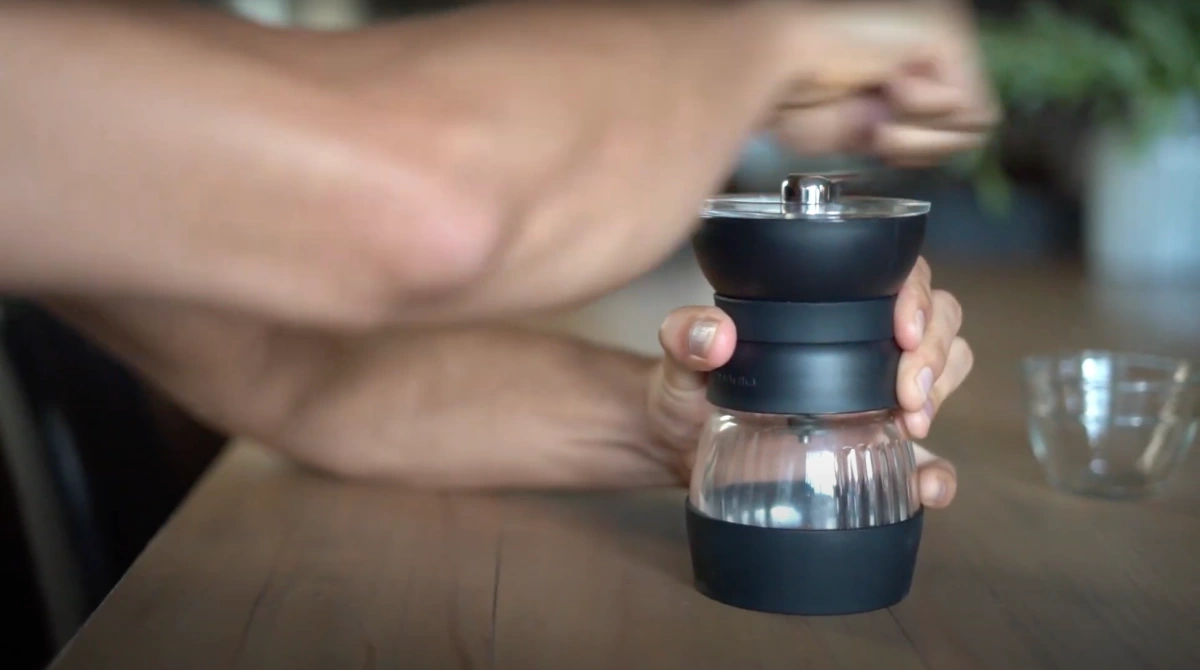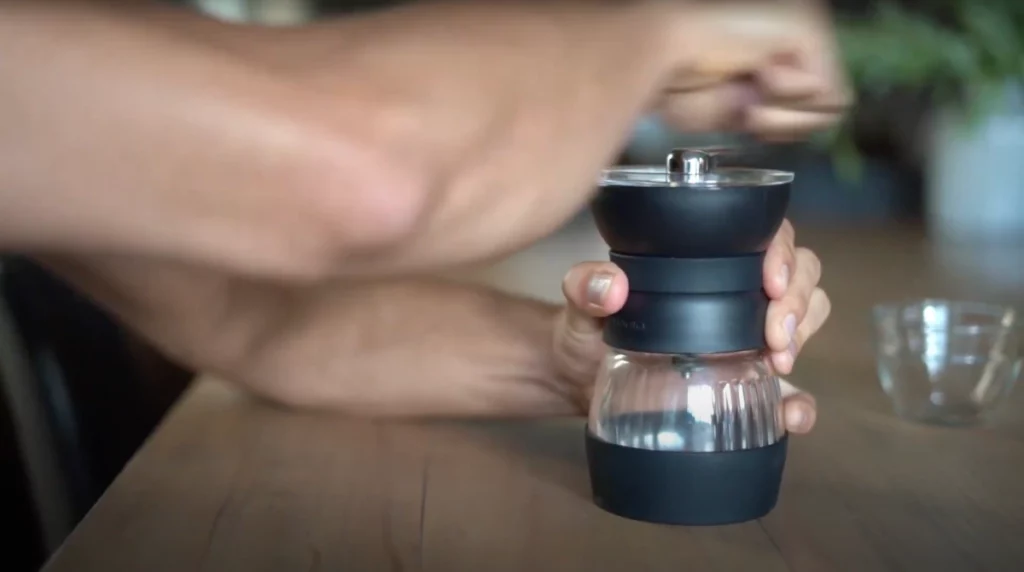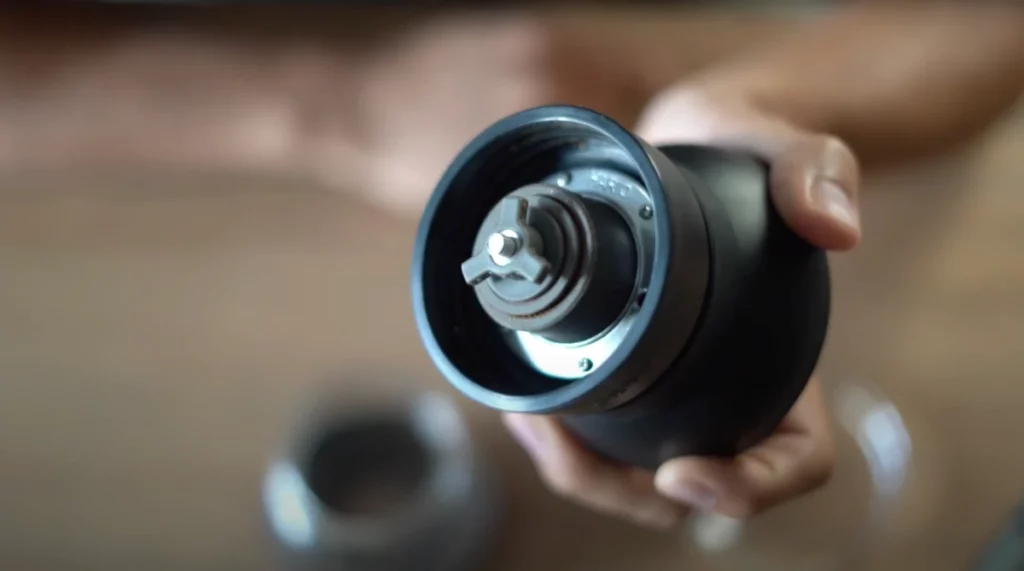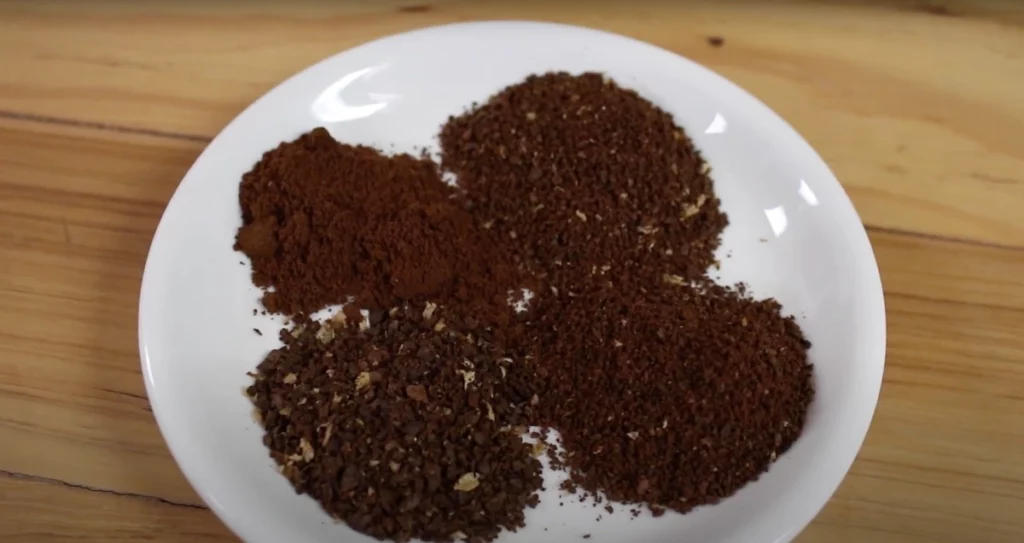Hario has long been an iconic name in the coffee world, renowned for its high-quality brewing equipment and accessories. From the legendary V60 pour-over cone to various kettles and servers, the brand has earned its reputation for combining Japanese aesthetics with functional design.
The Hario Skerton hand grinder has been a cornerstone in the manual grinding community, often hailed as the go-to choice for those on a budget. Building on this legacy, Hario has introduced its latest upgrade: the Skerton Pro. Priced under $50, this new iteration aims to capture the essence of its predecessor while offering modern improvements.
But in a market where manual grinders span a wide range of prices and capabilities, does the Skerton Pro offer more than just affordability?
In this Hario Skerton Pro review, I’ll share my experience with the grinder and whether I still recommend it in 2024.
Summary: Hario Skerton Pro Coffee Grinder
- Solid construction that is built to last
- Compact design with foldable handle for easy storage
- Improved burr stability for a more uniform grind
- Budget-friendly gateway to specialty coffee
- Price: $47.25
Hario Skerton Pro Design And Build Quality and
The Skerton Pro has a minimalist yet functional design. It feels solid in hand, not too heavy but not flimsy either. It is made with stainless steel, glass and ceramic.
Its dimensions are compact, making it a good fit for my countertop and small spaces in general. Weighing in at 1.4 lbs (643 grams), it’s portable but still feels substantial, unlike one of it’s competitors – the Porlex Mini – which feels cheap and poorly built.
The Skerton Pro’s handle is noticeably thicker and sturdier, attaching via a hex lock for better power transfer. This is a clear upgrade over the Hario Skerton Plus, where the handle could sometimes feel less secure.
The body of the Pro has been reinforced to counteract twisting forces during grinding, enhancing the grinder’s overall durability and performance.
Additionally, the hopper capacity in the Pro model holds 60 grams of beans, almost double what most quality hand grinders, including the Skerton Plus, can accommodate. This makes the Skerton Pro a more versatile choice, especially for larger batch brews or cold brews where particle fineness and distribution are key.
Skerton Pro Burrs
The Skerton Pro manual grinder is equipped with 48mm ceramic conical burrs, a size that’s substantial for this price range. These burrs are designed for both durability and a cool grinding process, which I find essential for preserving the coffee’s natural oils and flavors.
The Skerton Pro takes a significant leap in burr stability compared to its predecessor, the Skerton Plus. While grinding, I noticed the Pro model offers a more uniform particle size, thanks to its improved burr stability and the addition of a spring that minimizes burr wobble.
This is crucial for achieving those complex tasting notes and body in your brew. The Pro also simplifies grind adjustment, making it more convenient to switch between different grind sizes, a feature that’s particularly useful when you’re experimenting with more advanced brewing methods.
Hario Skerton Pro Grind Settings
Each coffee has it’s own unique characteristics, so dialing it in will require some adjustment. However, I recommend using the Skerton pro settings below as a guideline to start from.
- 2 – 3 Clicks: Ideal for espresso, delivering a fine grind that packs well into a portafilter. Warning: A lot of effort is required.
- 3 Clicks: Perfect for Moka Pot, offering a grind that’s fine yet not as powdery as espresso.
- 4-6 Clicks: Suitable for Aeropress, providing a grind that balances extraction and brew time.
- 6 – 8 Clicks: Tailored for V60 pour-over, yielding a medium-fine grind that works well with this brewing method.
- 7 – 8 Clicks: Optimal for Chemex and drip coffee, offering a medium grind that complements these brew styles.
- 9+ Clicks: Recommended for French Press and cold brew, delivering a coarse grind that suits immersion brewing methods.
As with all my grind setting recommendations, choose the finer end of the range for light roasts and the coarser end for dark roasts.
Hario Skerton Pro Grind Consistency And Performance
While the Skerton Pro’s 48mm ceramic burrs can technically achieve a fine grind suitable for espresso, I found the experience unenjoyable. The grind isn’t as uniform as you’d want for a perfect shot, and you risk clogging the portafilter.
However, the biggest issue wasn’t the evenness of the grind. My biggest problem with the Skerton Pro was the time and effort required to grind for espresso. Using light roasts it takes a lot of work and feels like a shoulder work out in the gym. I found it slow and cumbersome. This kind of workflow is unsustainable for 99.9% of people.
If espresso is your go-to, you’re better off investing a bit more into a more capable grinder.
For medium-fine grinds like Aeropress or pour-over, the Skerton Pro is surprisingly decent. I’ve brewed with the Hario V60 and Clever Dripper and didn’t encounter issues like over-extraction or clogged filters.
However, when it comes to coarser grinds for French Press, the Skerton Pro falls short. The fines that mix in with the coarser particles can lead to over-extraction. It can still make a decent brew, but it’s by no means perfect.
Is It Worth It?
The Hario Skerton Pro serves as an excellent entry point for those venturing into the realm of specialty coffee. It’s a budget-friendly, portable option that allows you to experiment with various grind sizes and brewing methods. While it may not deliver the most consistent grind for every brew type, it certainly outperforms blade grinders and offers a taste of what freshly ground beans can bring to your cup.
If you have a maximum of $50 to spend on a grinder, the Skerton Pro is still the best pick. However, if you can stretch the budget a little, something like the Timemore C3 hand grinder or the Q2 by 1Zpresso is going to give you far better results.
It’s essential to recognize the Skerton Pro for what it is — a gateway grinder. As you deepen your understanding of coffee and refine your palate, you’ll likely find yourself yearning for a grinder that offers more precision and consistency.
When that time comes, there are plenty of higher-end manual and electric grinders waiting to take your coffee experience to the next level. But for those just starting their journey, the Skerton Pro offers a valuable stepping stone.


Coffee expert and industry insider, I’ve dedicated years to mastering the art and science of coffee making. From scrutinizing particle fineness to evaluating burr shapes, I delve into the minutiae that elevate coffee from good to exceptional. Whether it’s a complex pour-over or a robust espresso, my insights cater to those who don’t just drink coffee, but experience it.





